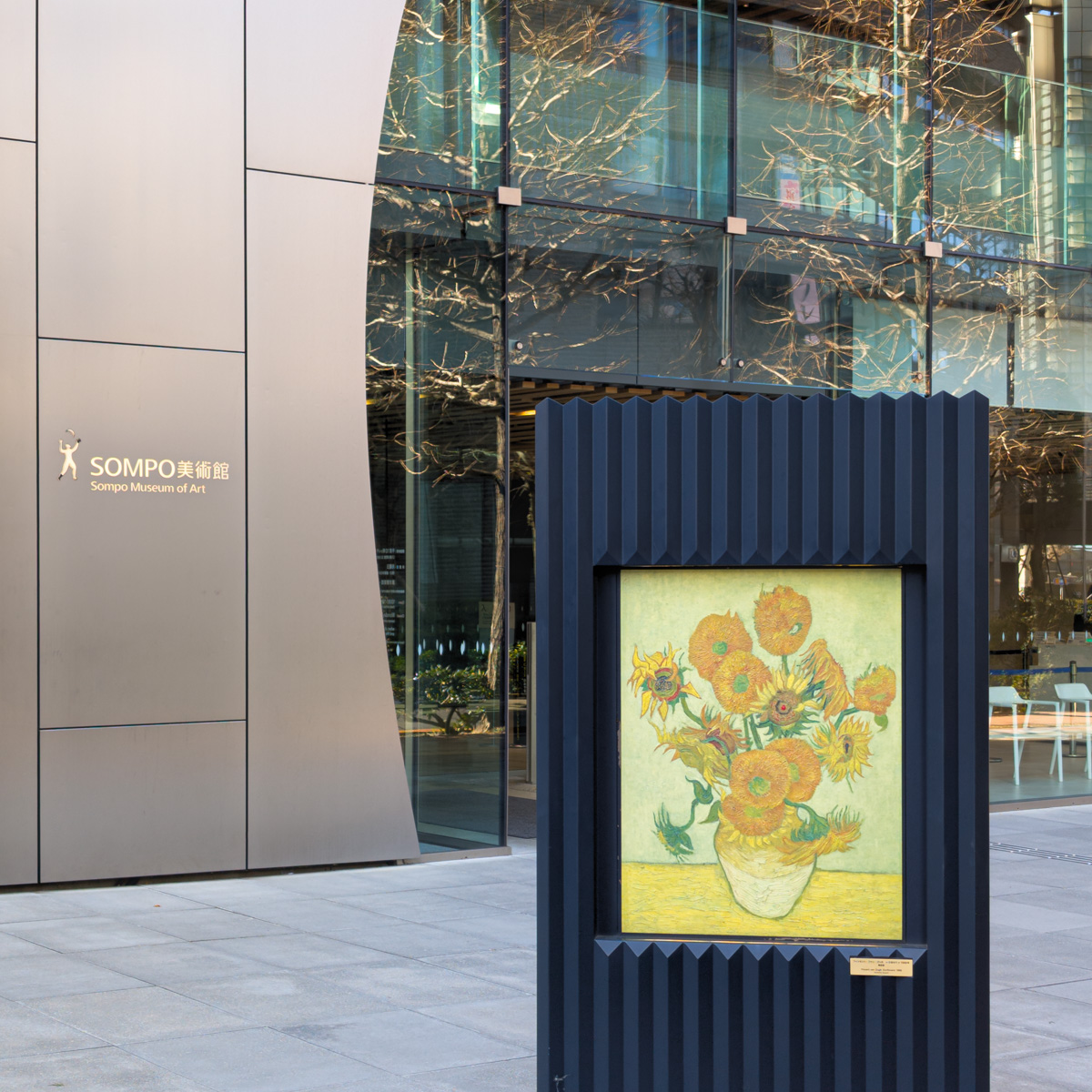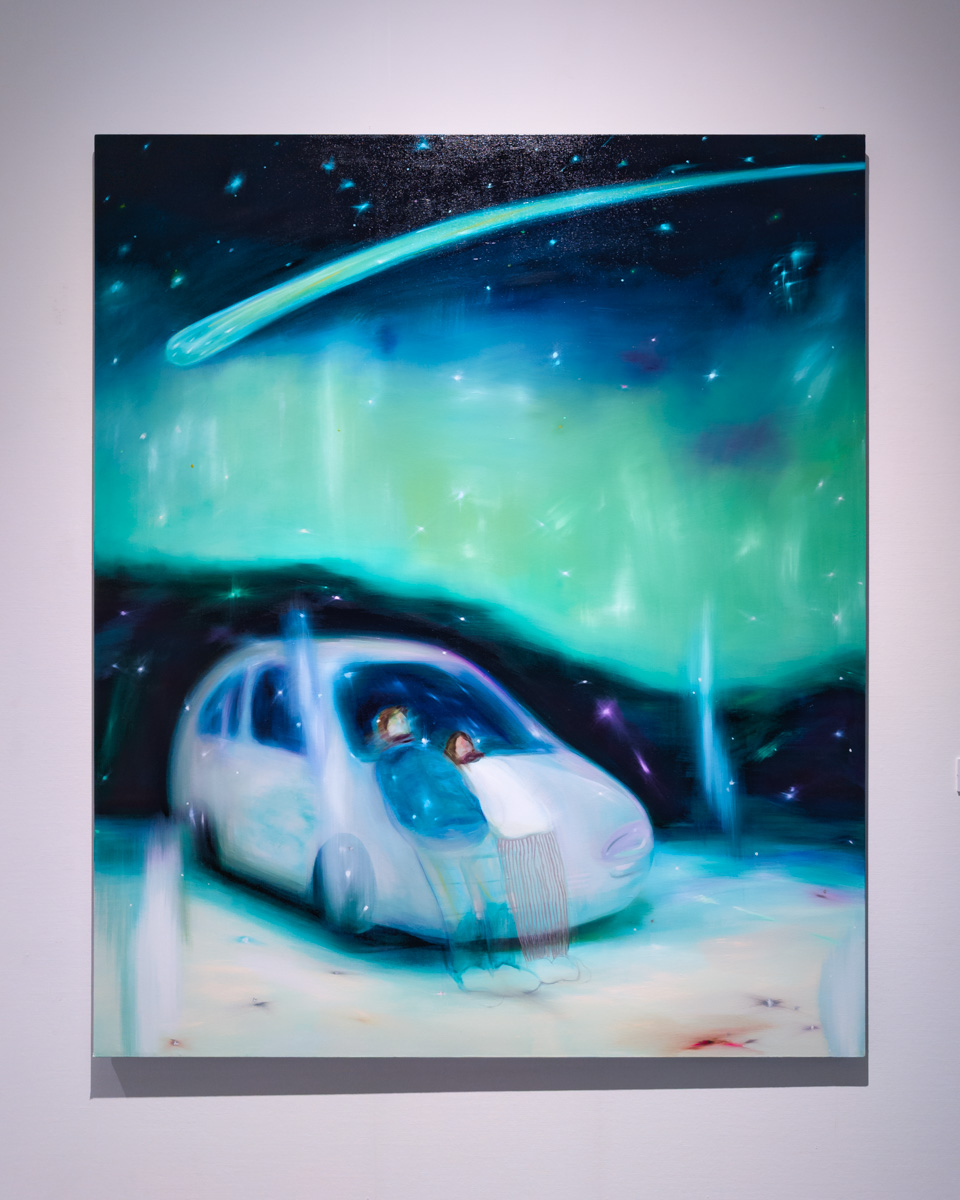
Today I visited the SOMPO Museum to see Vase with Fourteen Sunflowers, the only painting from Van Gogh's sunflower series in Asia. But unexpectedly, I discovered another work by artist Yusuke Ishigami related to the night sky, which brought back memories from my childhood.
The first was from a summer camp I attended as a child. One day, our group stayed overnight at a school in the mountains. That night, there were only faint insect sounds, and it was strangely quiet. On the school's side, there was no wind or clouds, yet in the distant night sky, lightning kept flashing. Like pressing the fast-forward button, the lightning instantly spread like a spider's web, silver-white complex lines crisscrossing and filling the distant sky in a moment. I expected a thunderous roar to follow seconds later, but it never came from that faraway night sky.
And so, the lightning repeatedly flashed, intertwined, and disappeared in the distant night sky like a silent film, until I drifted into deep sleep.
The second memory is from when my brother and I were in Nantou as children. One night, we went flying squirrel hunting with our father's hunter friends. As we ventured deeper into the mountains, it became pitch dark, and the hunters could no longer bring children along. The hunter uncle told us to wait there, and they would come back for us after the hunt was over.
We two children were left like that in a forest deep in the mountains. Looking back, it was truly reckless - this place had absolutely no artificial light sources - yet for some reason, we never felt afraid. At first, we were laughing and chatting, but after a while, both my brother and I fell silent, watching the forest slowly transform in the night.
Then, our surroundings gradually grew brighter. We were surrounded by thousands of fireflies. It was like being inside the Milky Way, with brilliant constellations descending around us. Even without atmospheric scattering, these stars flickered on and off like breathing, displaying vitality like celestial bodies. This scene was deeply etched into my heart, becoming a sight I could never forget for the rest of my life.
At the Ryuichi Sakamoto exhibition at the Museum of Contemporary Art Tokyo, there was a passage:
How many times will you remember a particular afternoon from your childhood, an afternoon that has become so deeply a part of your life that you cannot even imagine yourself without it?
These two experiences truly constitute who I am. In the decades since I've grown up, I occasionally recall these nights, and they have become the foundation of my being as a person. Perhaps this is why I'm drawn to various artworks related to the night sky. For instance, when I listen to Emilíana Torrini's song "Nightfall," I feel that humans are like shooting stars in the boundless starry sky, and meeting anyone while crossing that sky is a rare and precious connection.
So when I saw this painting, The Day We Saw the Stars, I was similarly drawn to the night sky, the shooting star, and the dreamlike transparency of the human figures.

Looking at this painting, "Nightfall" echoes in my heart. Just as the lyrics describe, life is merely a fleeting moment of brilliance. Like a shooting star crossing the night sky, gently carried by the light and shadows of twilight, flying through this brief and beautiful pale blue night sky.
If we should meet in the night sky by chance, then let us nod, smile, and greet each other.